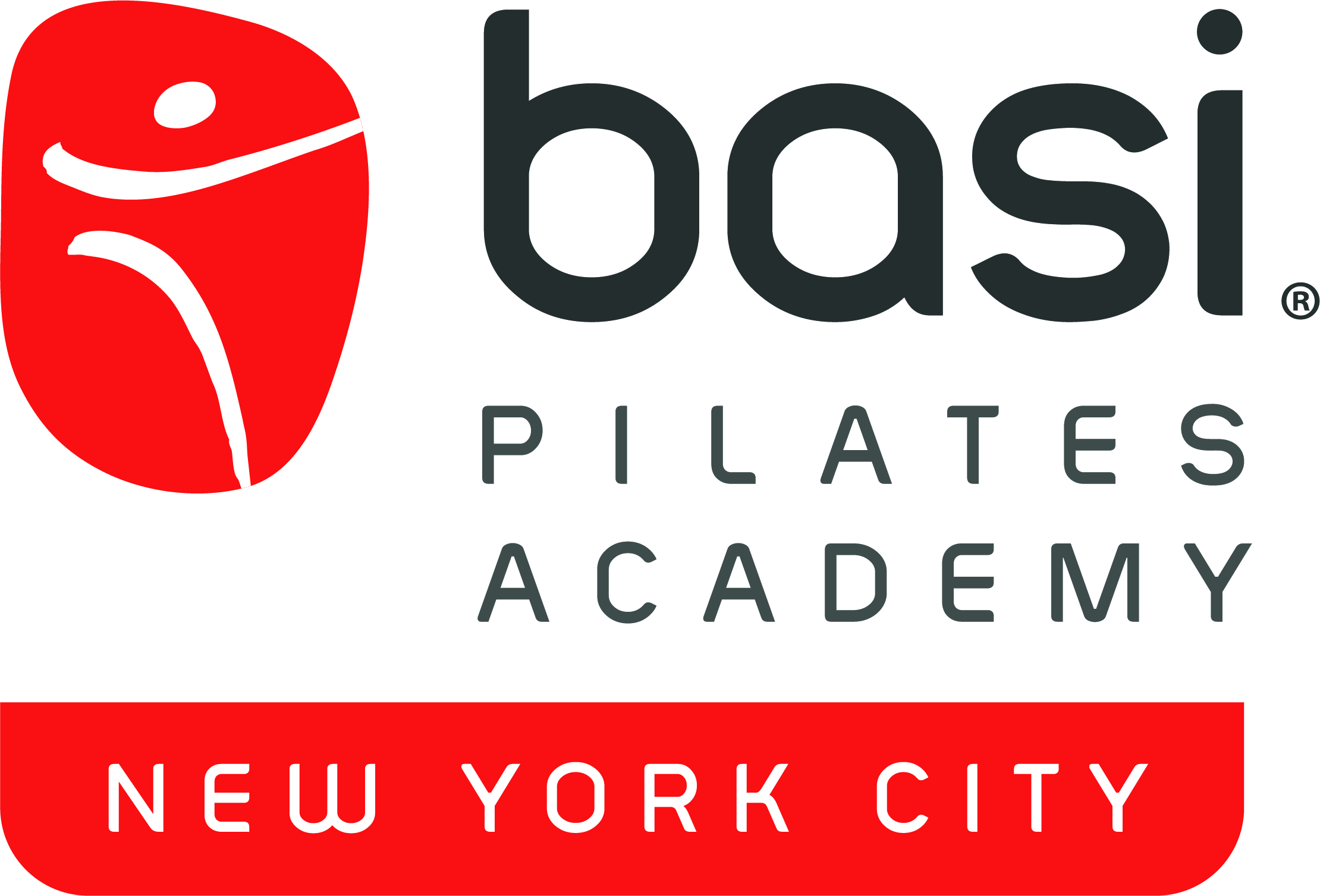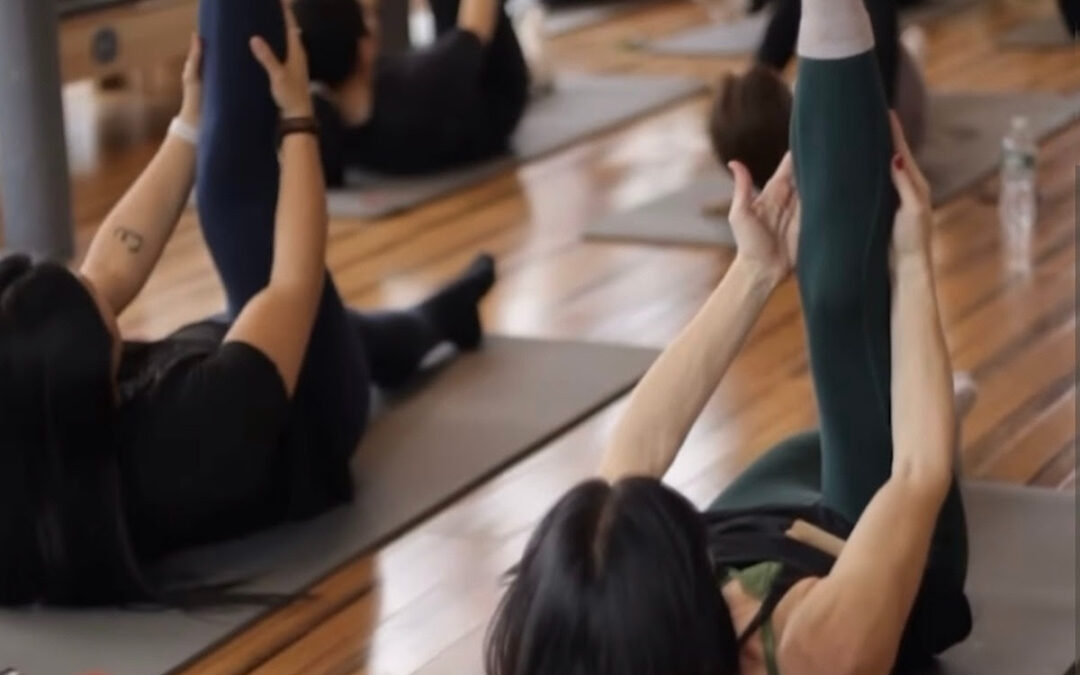In the beginning of the month I taught the last module of the BASI Pilates Comprehensive Teacher Training to another inspired, grounded, excited group of students. I can’t wait to see them flourish as they embark on their practical hours of self practice, teaching and observation. Every group reignites my love for this modality and somehow the system can EBB and Flow just right to accommodate every unique person who desires the benefits that go hand in hand with attempting the repertoire.
Around this time last year I wrote about five things you should bring with you to the BASI Pilates Comprehensive Teacher Training Program.
- Open Mindedness – to learn the rules and when to bend them
- Discipline – showing up to listen, learn and practice
- Passion – for applying Pilates education to anyone
- Compassion – for others and yourself
- Excellence – in your efforts
I can attest to those that bring out these qualities from within themselves will be blessed with the surprises and light bulb moments everyday of their practice.
We begin this application in our modules.
Here are five unexpected things that will happen during the BASI Pilates Teacher Training that will hopefully lead you to many light bulb moments in your body and mind.
1. You will learn almost as much from each of your fellow students’ unique stories than from the 12 BASI Pilates Comprehensive Course modules.
Celebrating the successes and watching your peers work through obstacles is invaluable to your learning experience. Similarly, it is when you start applying the knowledge to real life bodies and guiding yourself and others through their own unique process that you will start to absorb the magnitude of this work.
One example is that I found side hip work in parallel for glute medius strengthening incredibly challenging, to the point that I thought I must be doing something wrong. When I began teaching with clear specificity in this exercise, I realized that pretty much everyone felt the same. I also realized how de-conditioned this area is in the overall population of athletes and non athletes alike. I continue to incorporate it in both personal practice and in my teaching with extra attention on alignment.
2. You will find at least 50% of the repertoire incredibly challenging and this is the fun part!
This is why we choose to study a technique such as Pilates. If it were easy then it wouldn’t be worth the time. Students that really put in the required time and dedication come out so strong and aware. I still think every exercise is hard!
When I am demonstrating the work throughout the modules, I have a very humbled and humorous dialogue happening inside me. I can’t believe how challenging the work still is after decades of doing it. It is very similar to dance training in that way. More flow, more breath and efficiency, but not pass or easy. Once you learn the choreography of an exercise, you just keep working deeper for more stability and strength as well as seeking more length in your body for increased ROM. All of the back extension exercises have been such an evolution for me. I had to work so hard for many years to keep the brunt of the work out of the middle of my lumbar spine. Over time I learned how to keep my abdominals to support my pelvis and truly engage my hip and thoracic extensors instead. I encourage students with the same challenges to work on the set up of each exercise and dynamically hold the setup posture while breathing; feel the muscles that you want to work in stability vs the muscles you want to work in motion. Often it is capturing muscle coupling of the quads and hamstrings to properly fire the hip extensors directly around the sits bones that is most challenging, but this is what alleviates the lower back building the endurance necessary to make it through intermediate and advanced repertoire in the back extension block of the BASI Pilates block system.
3. The exercises you have to work harder at achieving will make you a better teacher than the ones you find easier.
Because the benefits of Pilates lay within the process, learning to articulate the steps you take in your own body over days, months and even years to achieve the exercises you find the hardest. Personally, I never found any single exercise to be easy, ever. For example, I never could feel my spine fully articulate in the classic mat roll up. I would round my shoulders forward, lift my legs, and feel a jump when I got to the less articulate parts of my spine. Using the apparatus to feel articulation in my abdominals and correct placement in my shoulder girdle such as when using the rod up bar on the Cadillac, I was then able to feel the benefits in action. As I coach my students through this exercise, I know what it feels like. I understand that struggle. Press more through the hip extensors, feel connection in the shoulder girdle stabilizers for better neck placement, and let the abdominals articulate the spine rather than forcing the spine. All of these cues come from personal experience and feeling benefit in the process.
4. Mat is the easiest to cheat but the hardest to execute.
Many students come into the program thinking that the apparatus: Reformer, Cadillac, Wunda Chair, Ped-a-pull, Step Barrel, and F2 Chair are the hardest because of the resistance factor that comes along with the springs. While the springs do make exercises more challenging because they add weight and build strength, they also add assistance and feedback to let you know when you might be over or under activating a specific area of the body. The Pilates Matwork insists that you create your own resistance and consistently work to achieve high quality movement. You are the machine with no apparatus aside from an occasional prop when executing the matwork. It may sound counter intuitive but the apparatus will actually teach you how to make the mat exercises more challenging as you progress each year. For example, I still can not demonstrate the full expression of a mat exercise called control balance. However on the reformer we learn short spine, jackknife on the chair, and tower on the Cadillac. All of these exercises allow me to keep the benefits of working my hip extensors in an inversion. The feedback of the apparatus makes it so much easier for me to execute.
5. The foundation exercises can take longer to master than the advanced/ master level exercises.
Challenge yourself to practice only the fundamental and intermediate level exercises for your first 50 practice hours. I recently started advising my students to treat themselves as students of Pilates and not just students of the BASI Teacher Training Program. Respect the levels and the process of progressive layering when programming their own lessons. It can feel overwhelming to practice so many exercises when embarking on completing 500 practical hours in preparation of your final test out. I promise that if you really know the foundation and intermediate exercises and get your body to feel strong in both the set up while doing them, the advanced repertoire will just be icing on the cake.
These 2 short videos are basic preparations for placement of fundamental BASI Pilates repertoire. A solid set up ensures successful outcome of a given exercise. BASI Pilates offers a workshop called Set Up For Success and I encourage everyone to take it.
Video 1 moves through shoulder placement exercises in all planes of motion, and pelvis placement exercises in lateral flexion and rotation. The pelvic curl and spine twist supine that follow are from the BASI Pilates Comprehensive Teacher Training fundamental warmup.
Video 2 moves through abdominal engagement in different relationships to gravity. Rib and pelvic placement against the lever of the legs, followed by BASI Pilates chest lift and then stability of the legs against movement of the torso in rotation, flexion & extension. After working supine, we move to quadruped and prone positions to further work on shoulder, hip and abdominal activation in plank and back extension exercises. The final back extension exercise is also from the BASI Pilates Comprehensive Teacher Training Program.
Fundamental Preparatory WarmUp Part 1
Fundamental Preparatory Video Part 2
FOLLOW US
For full length videos that benefit our scholarship program visit Virtualogic.earth

